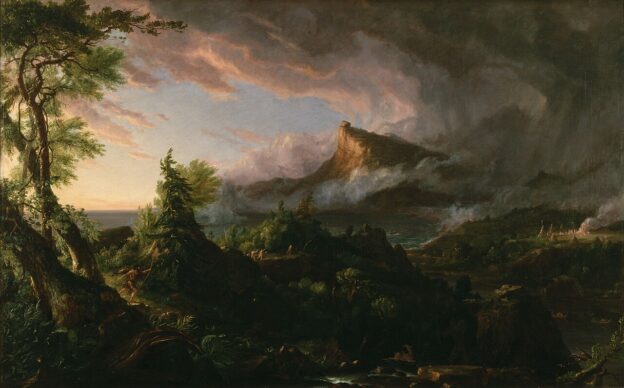Edward Gibbon’s inaugural volume of “The Decline and Fall of the Roman Empire” (1776) is a seminal exploration of Rome’s peak and the nascent stages of Christianity. Gibbon’s meticulous methodology and narrative prowess paint a vivid tableau of Rome’s golden age and the onset of one of history’s most transformative religions. This essay delves into the nuances of Volume I, highlighting Gibbon’s treatment of the Roman world at its apex and the challenges posed by the advent of Christianity.
Augustan Stability and the Roman World
Under Emperor Augustus, Rome witnessed an era commonly termed the ‘Pax Romana’, a prolonged period of stability and prosperity. Gibbon, with astute observations, navigates the reader through the complexities of this Roman world, delineating its geographical vastness, from the sands of Africa to the chilly realms of Britannia. His detailing of the diverse peoples under Roman rule, from the sophisticated Greeks to the ‘barbarian’ tribes of the North, provides a textured understanding of the empire’s sociopolitical fabric.
Gibbon’s description of the Roman government, with its intricate balance of monarchical power and senatorial tradition, offers insights into the mechanisms that sustained this vast empire. The Augustan age, as articulated by Gibbon, is less about the man but more about the structures and systems that underpinned this epoch of stability.
The ‘Five Good Emperors’ and Rome’s Pinnacle
Gibbon’s treatment of the ‘Five Good Emperors’ – Nerva, Trajan, Hadrian, Antoninus Pius, and Marcus Aurelius – is marked by a nuanced appreciation of their respective contributions. He adroitly weaves the narrative of these emperors, emphasizing their collective emphasis on governance, infrastructure, and diplomacy. Through his lens, this era is characterized not just by territorial expansions but also by internal consolidations, urban development, and cultural syncretism.
Yet, Gibbon’s Volume I is not an uncritical panegyric. He recognizes the vulnerabilities beneath the sheen, subtly hinting at the challenges that prosperity could, paradoxically, engender.
Christianity’s Inception and Its Ramifications
Gibbon’s introduction of Christianity in Volume I is perhaps the most contentious yet riveting section. He painstakingly chronicles the early spread of Christianity, presenting it as both an ideological and sociopolitical force. Gibbon does not shy away from discussing the theological underpinnings of early Christian thought, detailing its divergence from both Jewish traditions and Roman paganism.
However, it’s his exploration of the persecution of early Christians that showcases his analytical acumen. Gibbon delves into the reasons, both political and cultural, that led to the sporadic yet intense persecutions. In doing so, he presents a Rome that is both confident in its hegemony yet insecure in the face of an emergent spiritual challenge.
Conclusion
Gibbon’s Volume I is more than a historical account; it is a tapestry of narratives, expertly woven, presenting a Rome that is grand yet human, powerful yet vulnerable. His treatment of Christianity’s early days offers a fresh perspective, showcasing the transformative power of ideas in a world dominated by imperial might. As with any great work of historiography, Gibbon invites not just passive reading but active engagement, prompting scholars to question, reflect, and, ultimately, understand the intricate dance of power and faith in the annals of history.
